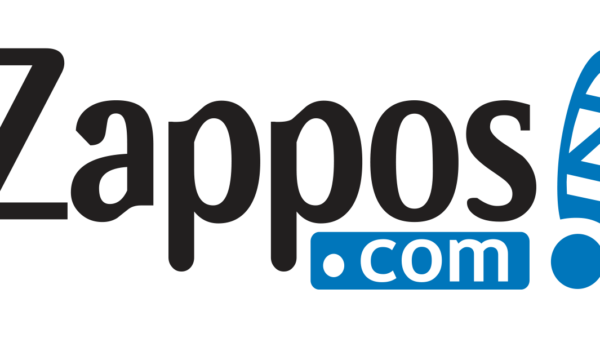Myers Briggs: still riding high but why?
Myers-Briggs or the Myers-Briggs Type Indicator or MBTI, call it what you will. The language and concepts of Myers-Briggs are still the most widely recognised across the world. They are known for their psychometric profiling and understanding their personality and preferences.
Where might you have come across it? Well, essentially any organisation anywhere that has ever done any team development work. Includes, talking about differences between individuals, particularly communication or working styles.
If you’ve ever spoken to an exec coach, they are almost certainly going to have Myers-Briggs somewhere in their kit bag. ENTJ, ISFP, whatever of the 16 letter combos you come across. Myers Briggs remains ubiquitous.
The Myers-Briggs model is based on a Jungian typology, comprising four pairs of preferences. The theory has it, that everyone is a ‘type’ that can be described with a combination of the 4 pair combos.
- Extraversion – introversion describes how you gain your energy….from the inner world or the outer world.
- Sensing – Intuitive relates to how you prefer to take in information…element by element, step by step (Sensing) or big picture, big message broad brush (Intuitive).
- Thinking – Feeling is about decision-making and what’s your first port of call when making decisions – is it to be data-based and objective (Thinking) or people- and values-based (Feeling)?
- Perceiving and Judging which refers to how someone prefers to live their life. ‘Perceiving’ people prefer the journey, they like to go with the flow; ‘Judging’ people prefer no surprises, follow-the-plan approach to life.
So why is Myers-Briggs still riding high in the world of personality profiling?
Firstly, they are well established and give users helpful results. Secondly, because it’s simple…ish. Other psychometric companies have entered the market more recently and proved more immediate and simple in the way they describe personality.
But they started that simple, descriptive journey. In its success, Myers-Briggs is a non-risky option for personal and team development, even though it’s a little bit ‘old hat’ these days. You’re not likely to be taking much of a reputational risk in recommending it. That’s because it’s so well known, which makes it attractive to some. They genuinely help people understand similarities and differences in a team or group context.
What is Myers-Briggs good for? And what are its shortcomings?
In my experience with personal development and team development work, Myers-Briggs definitely has value and has its place. It can be good for opening people up to the idea of similarity and differences. Can help to understand colleagues on a deeper level. In a way that can make a real and practical difference to working relationships.
For example, if I have a Sensing preference (I don’t by the way). I know that you have an Intuitive preference. I need to be aware that you may find a lot of detail and a step by step explanation. A bit of a turn-off or even slightly overwhelming. I may need to headline what I want to say for you, and/or start off our conversation by talking about the ‘why’ I need to talk to you before I get into the detail. Perhaps even questioning whether I need to give you the detail at all. Maybe just later as an FYI.
If I have a Judging preference (I do). I’m meeting someone who I know has a Perceiving preference. I probably shouldn’t apply too restrictive standards on when you’ll turn up and how well prepared you will be. Instead, trusting that we’ll get there and it’ll be a journey. Perhaps drawing on my own plan-following preference to help keep on track.
But Myers-Briggs isn’t without its shortcomings. It’s a preference measure. Not a comprehensive account of personality. It has limited capacity to explain the detailed nuance of human experience, thinking and behaviour. To be fair, it was never intended to be a comprehensive measure of all things human. It’s just that it can sometimes be leaned on a little too firmly to give a little too much.
Then there’s the exclusivity (as opposed to inclusivity) aspect. That’s when you know your 4 letter ‘type.’ Then you’re kind of ‘in the club.’ That can be quite excluding for people who haven’t been through a Myers-Briggs profiling experience. Part of this is the letters themselves – they can get mis-remembered or misinterpreted.
The idea of having a type is quite controversial. Surely people are more than just 4 letters. People must be subtler. Don’t they sit somewhere on a continuum rather than just being this OR that? Of course, the answer is yes. The MBTI company go to lengths to explain that that is the case in their training. Yet still can be misunderstood.
People can get into the habit of using their type or preference combo to explain away. Not ok behaviour because ‘they were born like that’ or ‘it’s their Myers-Briggs type’. Of course, that can be true of any profiler. It happens fairly often with MBTI, probably because the idea of type can get quite ‘fixed’ in people’s minds.
Finally, Myers Briggs is good for describing, but not necessarily for practically explaining. So what is it that might be driving your Extraverted preference or your Intuitive preference? What might that tell you about the skills or strengths you may be able to bring to your role? Of course, if you complete MBTI Step 2 (that not many people know about). You get more useful and nuanced information, but only if.
In short, MBTI is a great intro to understanding people, behaviour and preference. It can start you on a journey, even if it doesn’t have all the answers.
How can Strengthscope and Myers-Briggs work together?
I am very pleased to say that Strengthscope and Myers-Briggs make for a pretty happy partnership. Where Myers-Briggs sets up a description of someone’s ‘type’ or preference. Strengthscope can give more of an in-depth explanation of what might be driving that in a way that can practically be useful at work.
Let me give you an example. An Extraverted Myers-Briggs preference may be driven by any or many of the right hand profile strengths in Strengthscope. Could be Persuasiveness, or Relationship-building or Decisiveness or Results focus. That’s how Extraversion may show up for you. When it comes to a Feeling preference, that might be Compassion, or Empathy or Courage, a Collaboration or Leading strength.
Thing is, once you know which strengths are behind a preference. You can make more conscious, empowering choices about bringing more, or less, of each strength to different situations you may face at work. You can work on any ‘strength in overdrive’ by bringing in other complementary strengths to counter them.
It’s pretty challenging to take action to counter or modify an MBTI preference. Strengths are eminently flexible and practically useful. And they place you as an individual at the centre. So you can feel understood, appreciated and empowered to take action. Rather than just having to deal with being ‘in a box’ as a particular type.
So in essence, starting off introductory conversations using Myers-Briggs can be helpful when people have little knowledge of personality or preferences. And then building on that introductory knowledge with more practical conversations around how your preferences may show up in strengths form. Then putting those strengths to work in your day-to-day working context can be a great build.
Top 3 tips for choosing Myers-Briggs, Strengthscope or a blended approach
So in summary on everything we’ve covered, my advice is as follows:
- If you’re working with a group or a team or an individual looking for a basic introduction to understanding individual differences and similarities and how that might play out at work. That makes a reasonable case for MBTI to be used solo.
- If you’re working with a group or team or individual looking for an insight into what energises and drives their behaviour at work and how they can learn to harness that energy at individual and group levels to meet their goals. Strengthscope is an excellent first choice.
- Lastly, if you’re working with a group or team or individual looking to get an understanding of both individual differences AND what might be driving those differences in a way that helps people take action. Then comboing Strengthscope and MBTI will give you great results.
I hope you’ve found that helpful. I’ve certainly got a lot of value from using both tools together. Of course from using Strengthscope individually and at group level for many many years. But that’s also been the experience of many of our Strengthscope practitioner community. So I’m speaking on behalf of all of us users too.
Let me know about your experiences, challenges and any questions on social. Please share this podcast so that more people get the benefit. We run at about 2,000 downloads a month at the moment. Would love to grow that listenership. So whoever you feel could benefit from any of the podcasts, please pass on the good word. Till next time, stay strong.









